Warner Bros. Discovery Unveils New Shoppable Ads, Consumer ‘Moments’ for Max


SpaceX launched its sixth Starship rocket Tuesday, proving for the first time that the stainless steel ship can maneuver in space and paving the way for an even larger, upgraded vehicle slated to debut on the next test flight.
The only hiccup was an abortive attempt to catch the rocket's Super Heavy booster back at the launch site in South Texas, something SpaceX achieved on the previous flight on October 13. The Starship upper stage flew halfway around the world, reaching an altitude of 118 miles (190 kilometers) before plunging through the atmosphere for a pinpoint slow-speed splashdown in the Indian Ocean.
The sixth flight of the world's largest launcher—standing 398 feet (121.3 meters) tall—began with a lumbering liftoff from SpaceX's Starbase facility near the US-Mexico border at 4 pm CST (22:00 UTC) Tuesday. The rocket headed east over the Gulf of Mexico, propelled by 33 Raptor engines clustered on the bottom of its Super Heavy first stage.
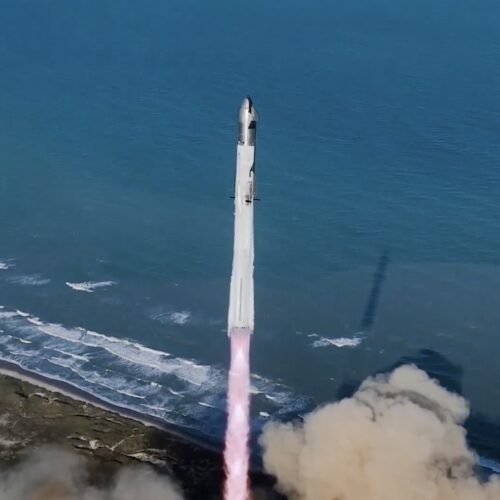
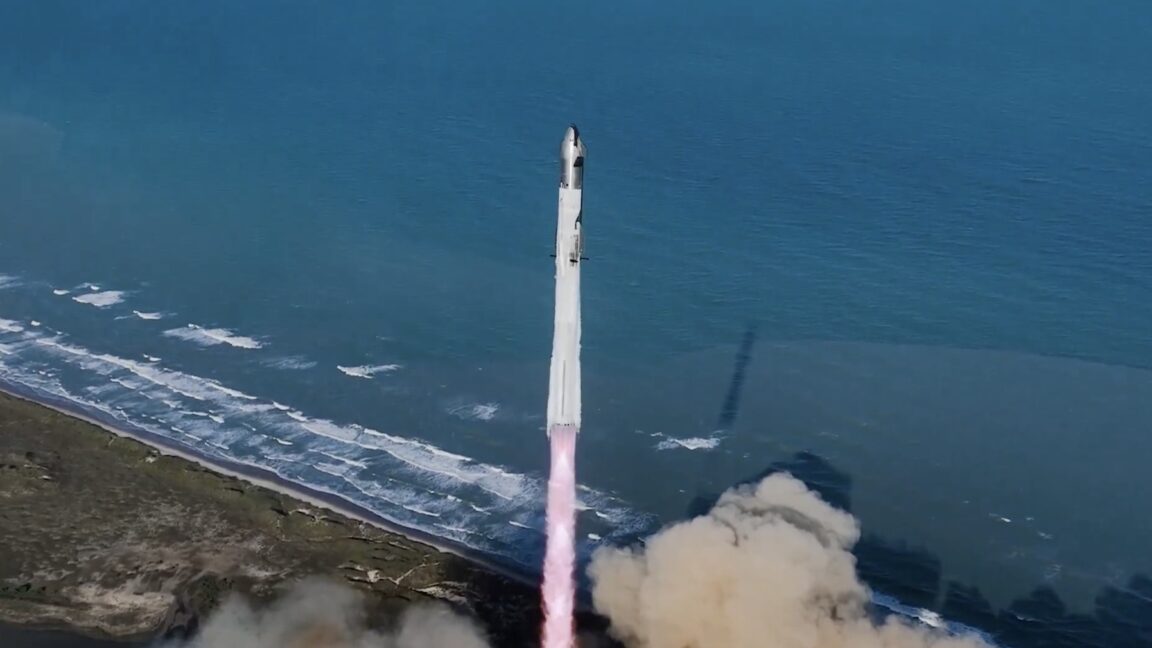
© SpaceX.
The sixth flight of SpaceX's giant Starship rocket, set for takeoff on Tuesday from South Texas, will test the vehicle's limits in new ways.
Most importantly, SpaceX will attempt to briefly reignite one of Starship's six Raptor engines in space. SpaceX tried this on Starship's third launch in March but aborted the engine restart after the rocket lost roll control during the flight's coast phase.
A successful engine relight demonstration would pave the way for future Starships to ascend into stable, sustainable orbits. It's essential to test the Raptor engine's ability to reignite in space for a deorbit burn to steer Starship out of orbit toward an atmospheric reentry.
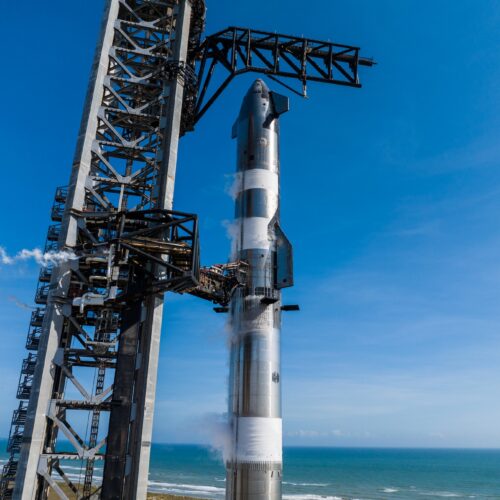
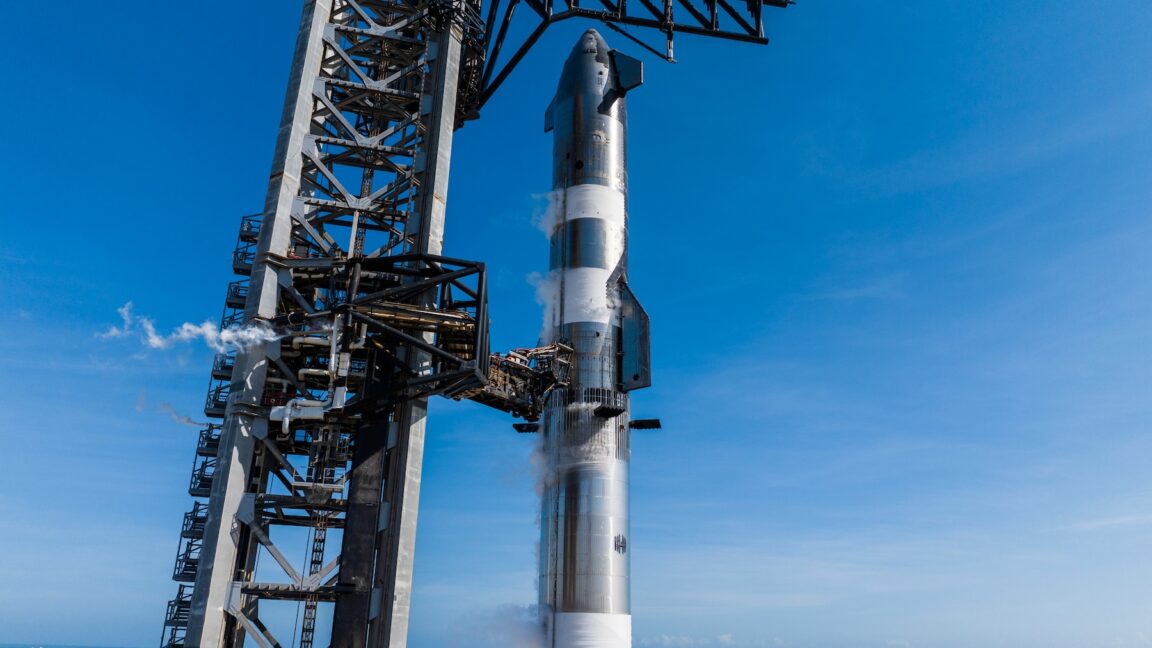
© SpaceX

Welcome to Edition 7.19 of the Rocket Report! Okay, we get it. We received more submissions from our readers on Australia's approval of a launch permit for Gilmour Space than we've received on any other news story in recent memory. Thank you for your submissions as global rocket activity continues apace. We'll cover Gilmour in more detail as they get closer to launch. There will be no Rocket Report next week as Eric and I join the rest of the Ars team for our 2024 Technicon in New York.
As always, we welcome reader submissions. If you don't want to miss an issue, please subscribe using the box below (the form will not appear on AMP-enabled versions of the site). Each report will include information on small-, medium-, and heavy-lift rockets as well as a quick look ahead at the next three launches on the calendar.

Gilmour Space has a permit to fly. Gilmour Space Technologies has been granted a permit to launch its 82-foot-tall (25-meter) orbital rocket from a spaceport in Queensland, Australia. The space company, founded in 2012, had initially planned to lift off in March but was unable to do so without approval from the Australian Space Agency, the Australian Broadcasting Corporation reports. The government approved Gilmour's launch permit Monday, although the company is still weeks away from flying its three-stage Eris rocket.
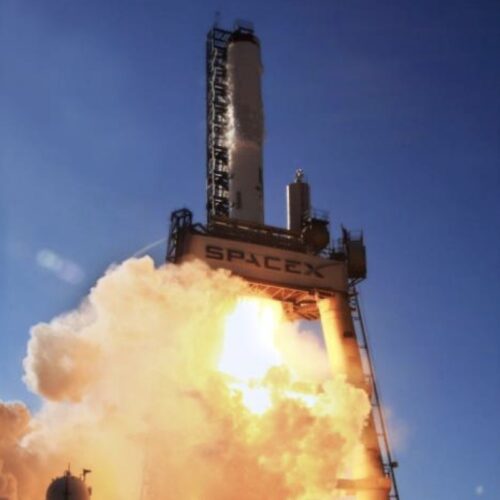
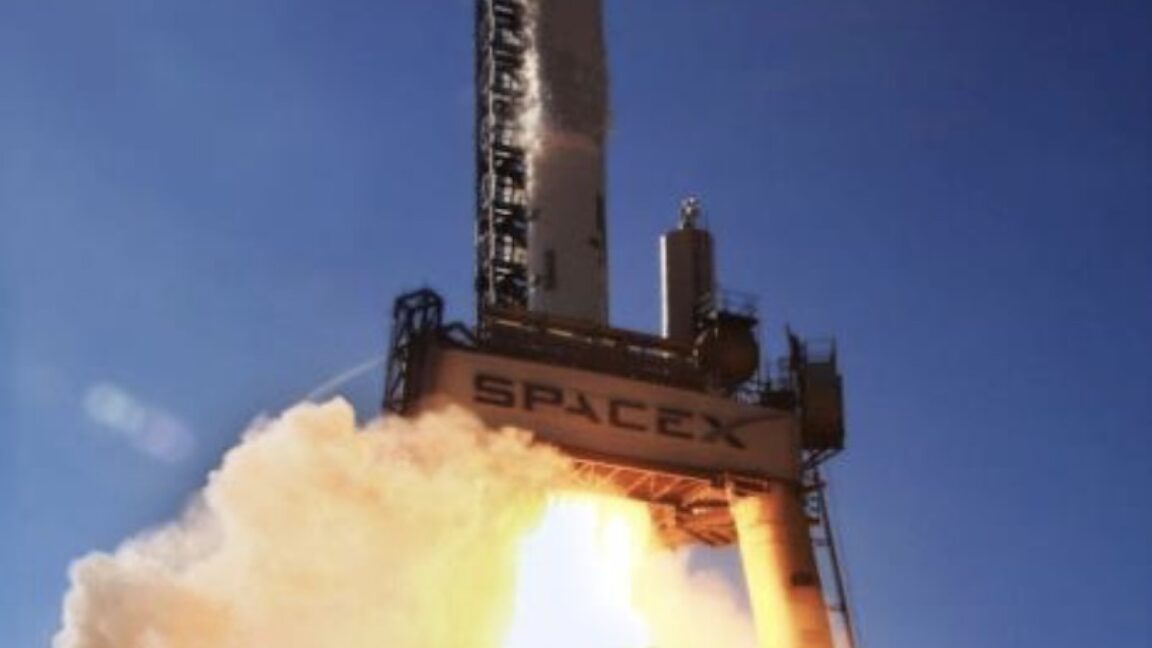
© SpaceX

Less than a month has passed since the historic fifth flight of SpaceX's Starship, during which the company caught the booster with mechanical arms back at the launch pad in Texas. Now, another test flight could come as soon as Nov. 18, the company announced Wednesday.
The improbable but successful recovery of the Starship first stage with "chopsticks" last month, and the on-target splashdown of the Starship upper stage halfway around the world, allowed SpaceX to avoid an anomaly investigation by the Federal Aviation Administration. Thus, the company was able to press ahead on a sixth test flight if it flew a similar profile.
And that's what SpaceX plans to do, albeit with some notable additions to the flight plan.
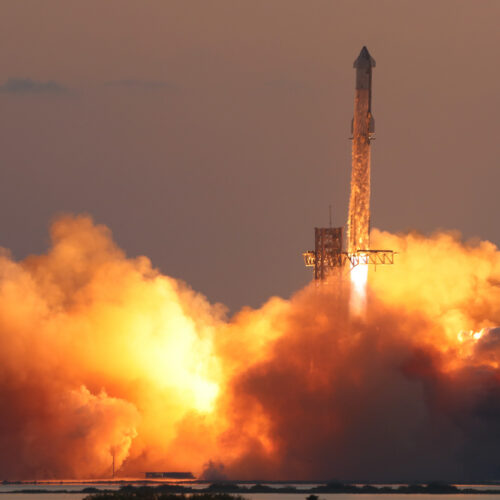
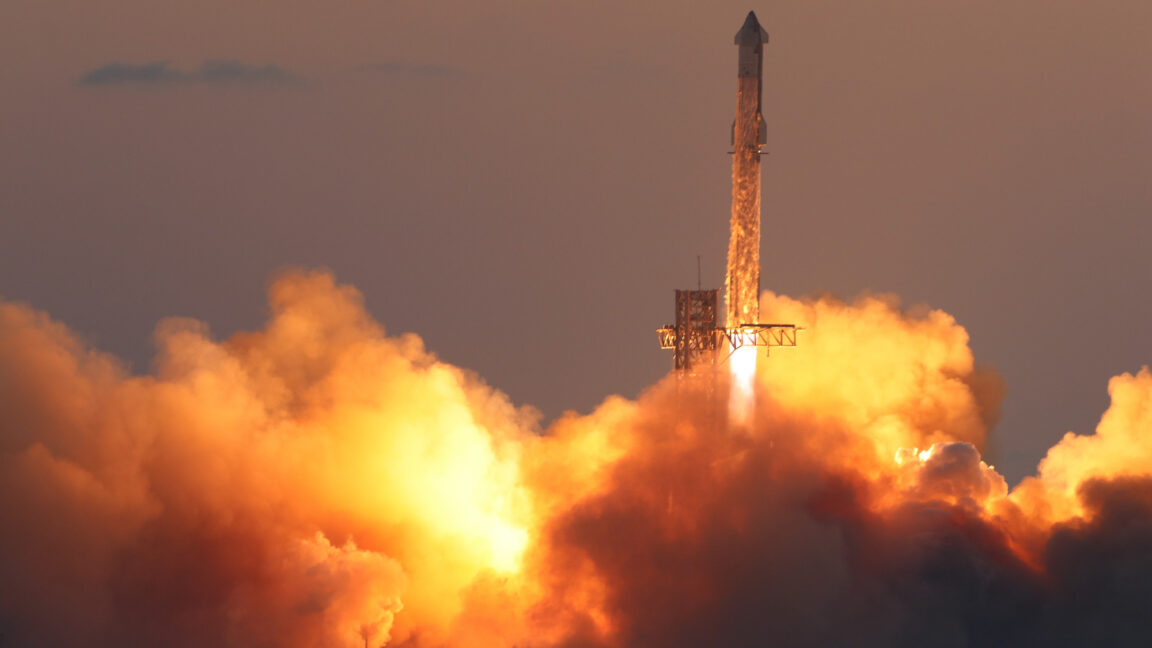
© Stephen Clark/Ars Technica
When Chinese space officials unveiled the design for the country's first super heavy lift rocket nearly a decade ago, it looked like a fairly conventional booster. The rocket was fully expendable, with three stages and solid motors strapped onto its sides.
Since then, the Asian country has been revising the design of this rocket, named Long March 9, in response to the development of reusable rockets by SpaceX. As of two years ago, China had recalibrated the design to have a reusable first stage.
Now, based on information released at a major airshow in Zhuhai, China, the design has morphed again. And this time, the plan for the Long March 9 rocket looks almost exactly like a clone of SpaceX's Starship rocket.
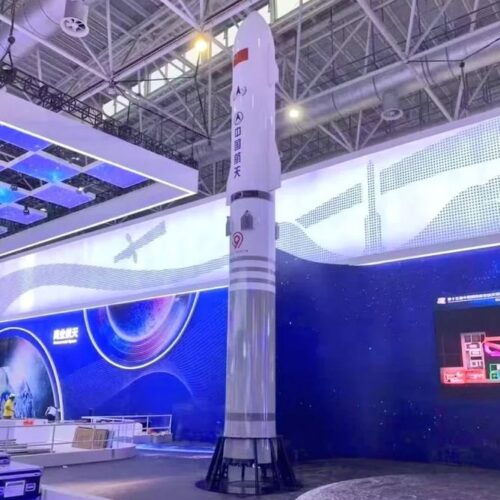

Welcome to Edition 7.17 of the Rocket Report! Next week marks 10 years since one of the more spectacular launch failures of this century. On October 28, 2014, an Antares rocket, then operated by Orbital Sciences, suffered an engine failure six seconds after liftoff from Virginia and crashed back onto the pad in a fiery twilight explosion. I was there and won't forget seeing the rocket falter just above the pad, being shaken by the deafening blast, and then running for cover. The Antares rocket is often an afterthought in the space industry, but it has an interesting backstory touching on international geopolitics, space history, and novel engineering. Now, Northrop Grumman and Firefly Aerospace are developing a new version of Antares.
As always, we welcome reader submissions. If you don't want to miss an issue, please subscribe using the box below (the form will not appear on AMP-enabled versions of the site). Each report will include information on small-, medium-, and heavy-lift rockets as well as a quick look ahead at the next three launches on the calendar.

Astra gets a lifeline from DOD. Astra, the launch startup that was taken private again earlier this year for a sliver of its former value, has landed a new contract with the Defense Innovation Unit (DIU) to support the development of a next-gen launch system for time-sensitive space missions, TechCrunch reports. The contract, which the DIU awarded under its Novel Responsive Space Delivery (NRSD) program, has a maximum value of $44 million. The money will go toward the continued development of Astra’s Launch System 2, designed to perform rapid, ultra-low-cost launches.
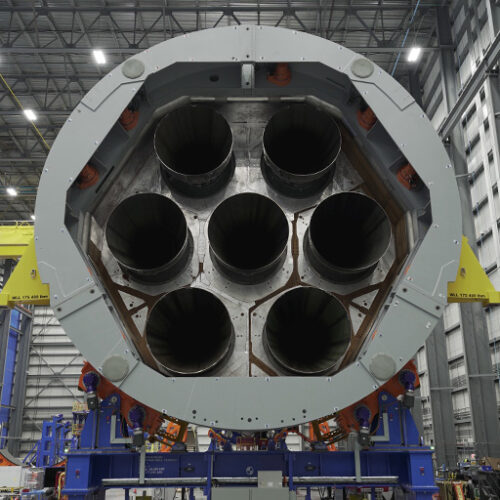
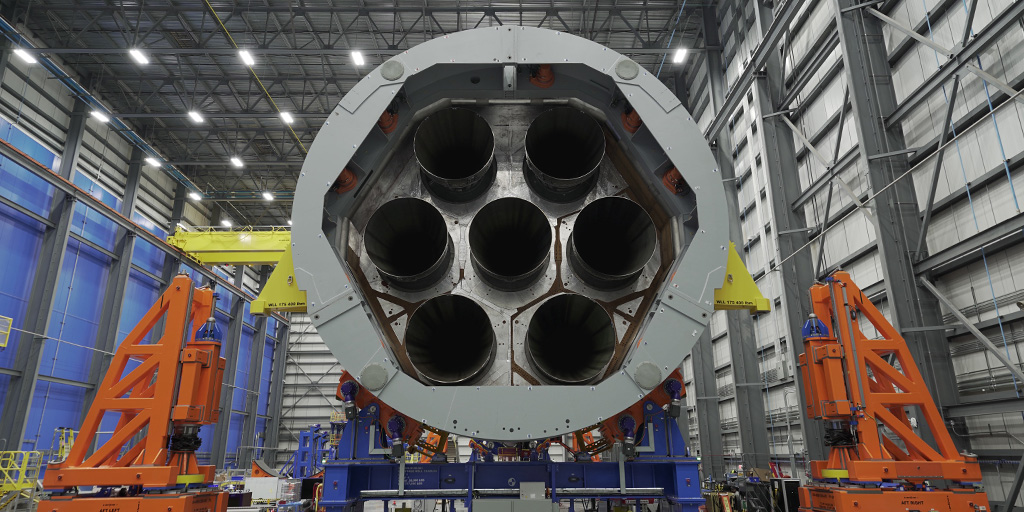
© Blue Origin
BOCA CHICA BEACH, Texas—I've taken some time to process what happened on the mudflats of South Texas a little more than a week ago and relived the scene in my mind countless times.
With each replay, it's still as astonishing as it was when I saw it on October 13, standing on an elevated platform less than 4 miles away. It was surreal watching SpaceX's enormous 20-story-tall Super Heavy rocket booster plummeting through the sky before being caught back at its launch pad by giant mechanical arms.
This is the way, according to SpaceX, to enable a future where it's possible to rapidly reuse rockets, not too different from the way airlines turn around their planes between flights. This is required for SpaceX to accomplish the company's mission, set out by Elon Musk two decades ago, of building a settlement on Mars.
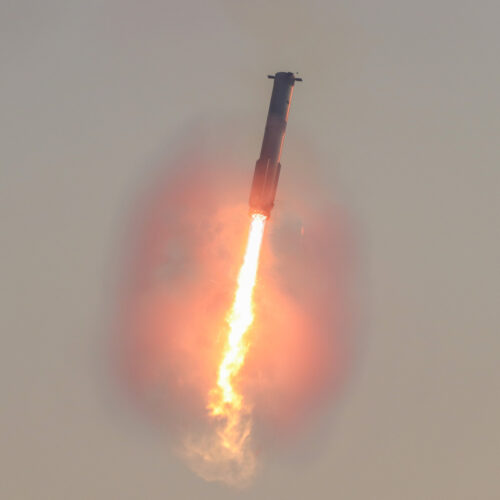
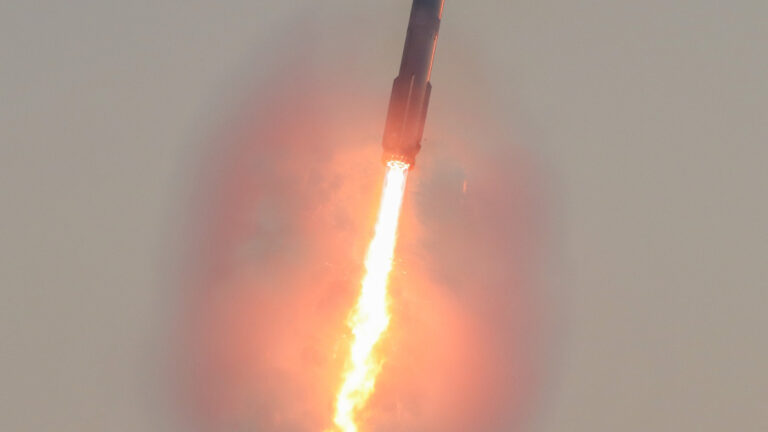
© Stephen Clark/Ars Technica
BOCA CHICA BEACH, Texas—SpaceX accomplished a groundbreaking engineering feat Sunday when it launched the fifth test flight of its gigantic Starship rocket and then caught the booster back at the launch pad in Texas with mechanical arms seven minutes later.
This achievement is the first of its kind, and it's crucial for SpaceX's vision of rapidly reusing the Starship rocket, enabling human expeditions to the Moon and Mars, routine access to space for mind-bogglingly massive payloads, and novel capabilities that no other company—or country—seems close to attaining.
The test flight began with a thundering liftoff of the 398-foot-tall (121.3-meter) Starship rocket at 7:25 am CDT (12:25 UTC) from SpaceX's Starbase launch site in South Texas, a few miles north of the US-Mexico border. The rocket's Super Heavy booster stage fired 33 Raptor engines, generating nearly 17 million pounds of thrust and gulping 20 tons of methane and liquid oxygen propellants per second at full throttle.
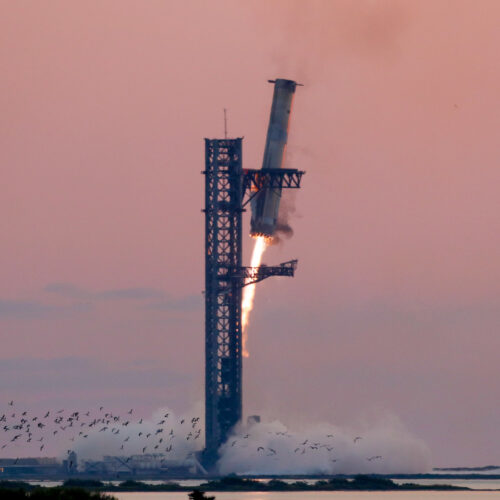
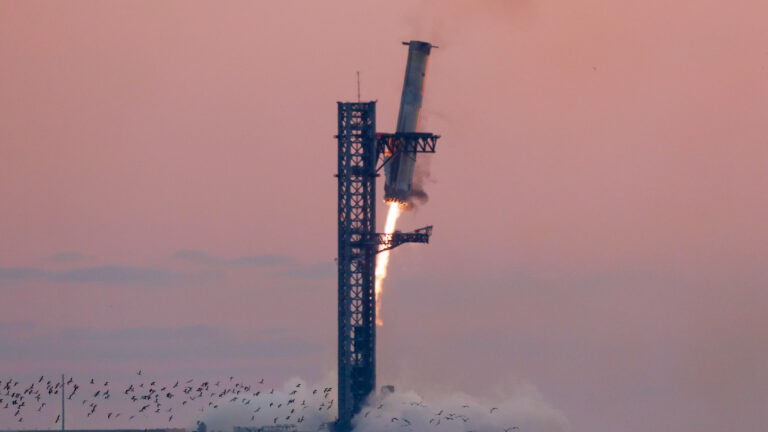
© Stephen Clark/Ars Technica
Early Sunday morning, SpaceX will try something no one has ever done before. If all goes according to plan, around seven minutes after lifting off from South Texas, the huge stainless steel booster from SpaceX's Starship rocket will come back to the launch pad and slow to a hover, allowing powerful mechanical arms to capture it in midair.
This is SpaceX's approach to recovering Starship's Super Heavy booster. If it works, this method will make it easier and faster to reuse the rocket than it is to recycle boosters from SpaceX's smaller Falcon 9 launch vehicle. Falcon 9's boosters usually come down on a floating drone ship stationed hundreds of miles out to sea, requiring SpaceX to return the rocket to shore for refurbishment.
“We’re going for high reusability," said Bill Gerstenmaier, SpaceX's vice president of build and flight reliability.
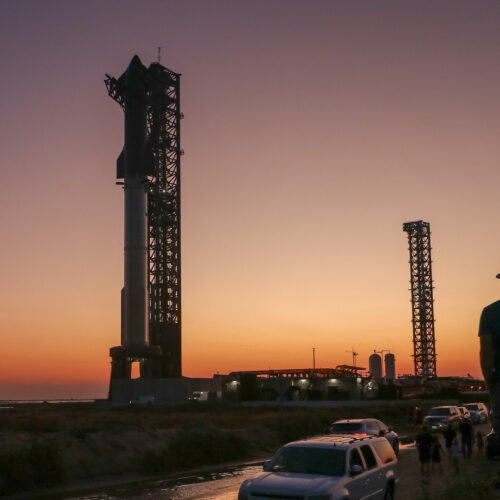
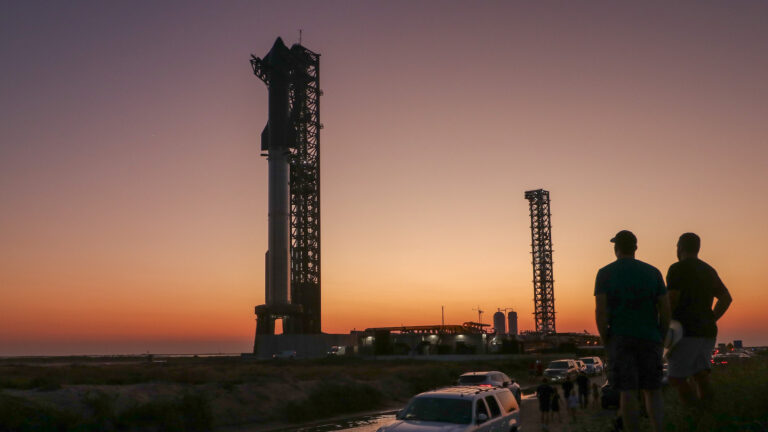
© Stephen Clark/Ars Technica
We may not have to wait as long as we thought for the next test flight of SpaceX's Starship rocket.
The world's most powerful launcher could fly again as soon as Sunday, SpaceX says, assuming the Federal Aviation Administration grants approval. The last public statement released from the FAA suggested the agency didn't expect to determine whether to approve a commercial launch license for SpaceX's next Starship test flight before late November.
There's some optimism at SpaceX that the FAA might issue a launch license much sooner, perhaps in time for Starship to fly this weekend. The launch window Sunday opens at 7 am CDT (8 am EDT; 12:00 UTC), about a half-hour before sunrise at SpaceX's Starbase launch site in South Texas.
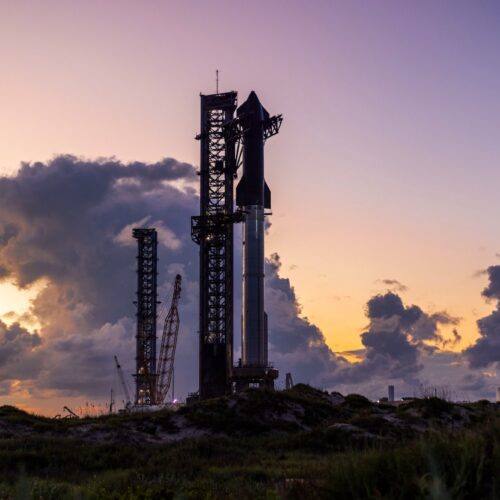
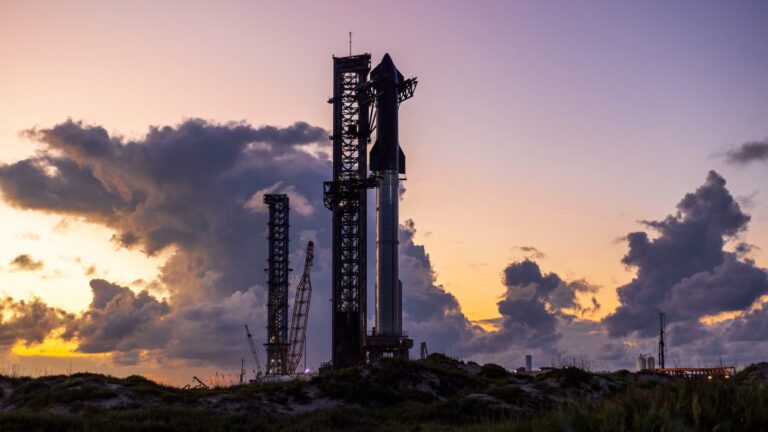
© SpaceX
The clash between SpaceX and the Federal Aviation Administration escalated this week, with Elon Musk calling for the head of the federal regulator to resign after he defended the FAA's oversight and fines levied against the commercial launch company.
The FAA has said it doesn't expect to determine whether to approve a launch license for SpaceX's next Starship test flight until late November, two months later than the agency previously communicated to Musk's launch company. Federal regulators are reviewing changes to the rocket's trajectory necessary for SpaceX to bring Starship's giant reusable Super Heavy booster back to the launch pad in South Texas. This will be the fifth full-scale test flight of Starship but the first time SpaceX attempts such a maneuver on the program.
This week, SpaceX assembled the full Starship rocket on its launch pad at the company's Starbase facility near Brownsville, Texas. "Starship stacked for Flight 5 and ready for launch, pending regulatory approval," SpaceX posted on X.


© [CDATA[Dominika Zarzycka/NurPhoto via Getty Images]]
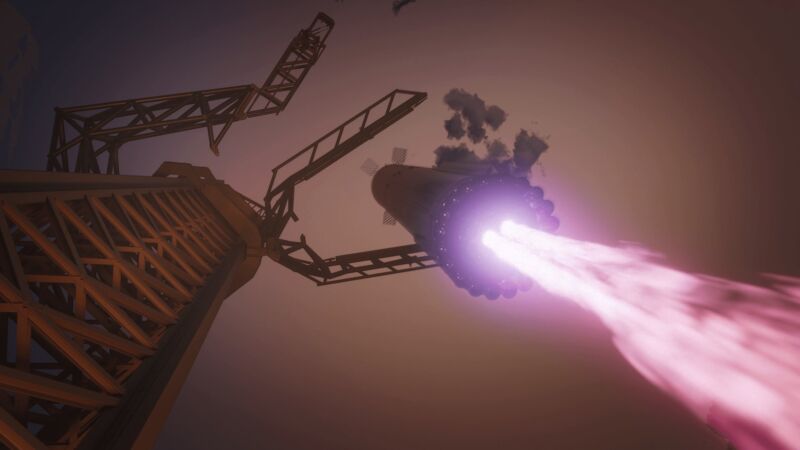
Enlarge / Artist's illustration of catch arms ensnaring SpaceX's Super Heavy booster. (credit: SpaceX)
The Federal Aviation Administration has signaled to SpaceX that it won't approve a launch license for the next test flight of the Starship rocket until at least late November, the company said in a statement on Tuesday.
This is more than two months later than the mid-September timeframe the FAA previously targeted for determining whether to approve a launch license for the next Starship flight. SpaceX says the Super Heavy booster and Starship upper stage for the next launch—the fifth full-scale test flight of the Starship program—have been ready to launch since the first week of August.
"The flight test will include our most ambitious objective yet: attempt to return the Super Heavy booster to the launch site and catch it in mid-air," SpaceX said in a statement.
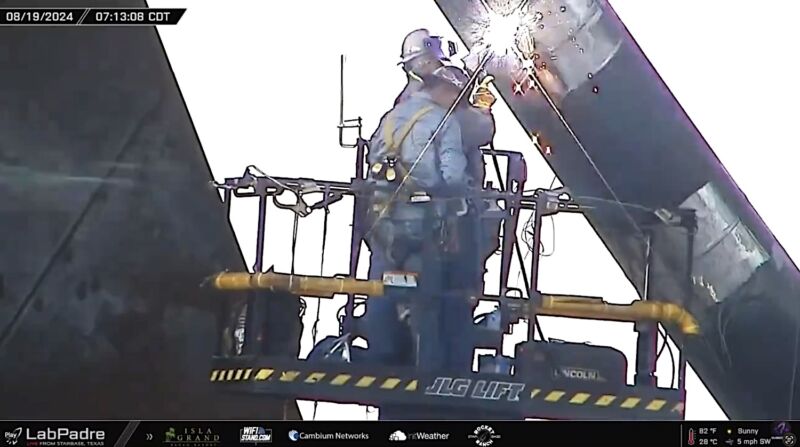
Enlarge / Welders at SpaceX's Starbase launch site work on the launch pad's "chopstick" catch arms this week. (credit: LabPadre)
Pretty much every day for the last couple of weeks, workers wielding welding guns and torches have climbed onto SpaceX's Starship launch pad in South Texas to make last-minute upgrades ahead of the next test flight of the world's largest rocket.
Livestreams of the launch site provided by LabPadre and NASASpaceflight.com have shown sparks raining down two mechanical arms extending from the side of the Starship launch tower at SpaceX's Starbase launch site on the Gulf Coast east of Brownsville, Texas. We are publishing several views here of the welding activity with the permission of LabPadre, which runs a YouTube page with multiple live views of Starbase.
If SpaceX has its way on the next flight of Starship, these arms will close together to capture the first-stage booster, called Super Heavy, as it descends back to Earth and slows to a hover over the launch pad.
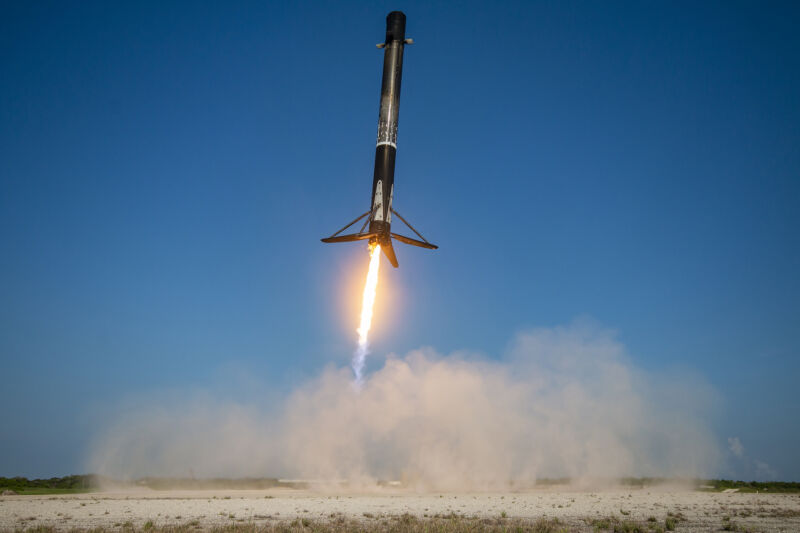
Enlarge / A Falcon 9 booster returns to landing at Cape Canaveral Space Force Station following a launch Thursday with two WorldView Earth observation satellites for Maxar. (credit: SpaceX)
Welcome to Edition 7.07 of the Rocket Report! SpaceX has not missed a beat since the Federal Aviation Administration gave the company a green light to resume Falcon 9 launches after a failure last month. In 19 days, SpaceX has launched 10 flights of the Falcon 9 rocket, taking advantage of all three of its Falcon 9 launch pads. This is a remarkable cadence in its own right, but even though it's a small sample size, it is especially impressive right out of the gate after the rocket's grounding.
As always, we welcome reader submissions. If you don't want to miss an issue, please subscribe using the box below (the form will not appear on AMP-enabled versions of the site). Each report will include information on small-, medium-, and heavy-lift rockets as well as a quick look ahead at the next three launches on the calendar.

A quick turnaround for Rocket Lab. Rocket Lab launched its 52nd Electron rocket on August 11 from its private spaceport on Mahia Peninsula in New Zealand, Space News reports. The company's light-class Electron rocket deployed a small radar imaging satellite into a mid-inclination orbit for Capella Space. This was the shortest turnaround between two Rocket Lab missions from its primary launch base in New Zealand, coming less than nine days after an Electron rocket took off from the same pad with a radar imaging satellite for the Japanese company Synspective. Capella's Acadia 3 satellite was originally supposed to launch in July, but Capella requested a delay to perform more testing of its spacecraft. Rocket Lab swapped its place in the Electron launch sequence and launched the Synspective mission first.
Entrepreneurship is a vital aspect of personal finance, offering individuals the opportunity to achieve financial independence, pursue their passions, and drive innovation. As an expert in Personal Finance, this article will delve into the world of entrepreneurship, providing insights on what it entails, its benefits, and the essential steps to start your entrepreneurial journey.
Welcome to Edition 7.05 of the Rocket Report! The Federal Aviation Administration grounded SpaceX's Falcon 9 rocket for 15 days after a rare failure of its upper stage earlier this month. The FAA gave the green light for Falcon 9 to return to flight July 25, and within a couple of days, SpaceX successfully launched three missions from three launch pads. There's a lot on Falcon 9's to-do list, so we expect SpaceX to quickly return to form with several flights per week.
As always, we welcome reader submissions. If you don't want to miss an issue, please subscribe using the box below (the form will not appear on AMP-enabled versions of the site). Each report will include information on small-, medium-, and heavy-lift rockets as well as a quick look ahead at the next three launches on the calendar.

Big delay for a reusable rocket testbed. The French space agency, CNES, has revealed that the inaugural test flight of its Callisto reusable rocket demonstrator will not take place until late 2025 or early 2026, European Spaceflight reports. CNES unveiled an updated website for the Callisto rocket program earlier this month, showing the test rocket has been delayed from a debut launch later this year to until late 2025 or early 2026. The Callisto rocket is designed to test techniques and technologies required for reusable rockets, such as vertical takeoff and vertical landing, with suborbital flights from the Guiana Space Center in South America.